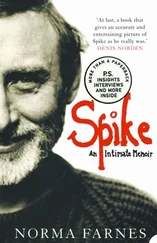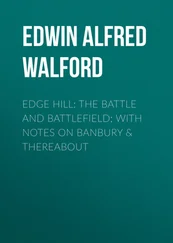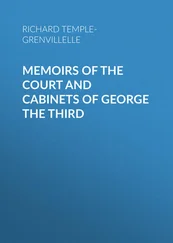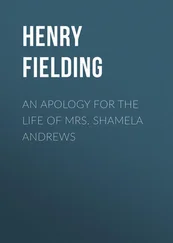How bad is it?
“Jerry,” I said, “I think you should advise the attorney general and the other members of the president’s family immediately. They need to know before they hear it in the press.”
The president is dead. Oh dear God. The president is dead.
KENNY O’DONNELL, ONE of President Kennedy’s closest friends and his chief of staff, had been riding in the follow-up car. He was beyond distraught.
“Clint,” he said, “I need you to call a funeral home. We need a casket.”
A casket. For the president. For Mrs. Kennedy’s husband.
At least I had something to do. As long as I had something to do, the images would leave for a few minutes. When I stopped, or when I looked at her, still caked in blood, I couldn’t see anything but the car moving away from me, the sudden explosion, and then Mrs. Kennedy, climbing onto the back of the car.
As long as I had something to do, that slow-motion picture in my mind would pause for a while, and I could hold it together. Keeping busy was the only way I was going to get through this day.
I found one of the hospital administrators and said, “I need to contact a mortuary and obtain a casket.”
“Yes, sir,” the man said, as he led me to a small office. He found the number for the Oneal Funeral Home—they were the best, he said—and left me to make the call.
My hand trembled as I dialed the number.
“I need a casket delivered to Parkland Hospital’s emergency entrance. Right away. The best one you have.”
“What’s your name, sir?”
“My name? My name is Clint Hill. Put it in my name. I need the best damn casket you have. Do you understand?”
Oh, God. Oh, God.
“It’s for the president . . . the casket is for President Kennedy.”
I hung up the phone and went back into the hallway. Paul Landis was still standing outside the door to the trauma room. Stoic and strong, he was holding it together. Somehow, we were all holding it together.
Mrs. Kennedy walked out of the trauma room, followed by the two priests.
“Thank you,” she said to them, looking each of them in the eyes. “Thank you so very much.”
I started walking toward her.
Down the hall, I heard Emory Roberts’s voice telling some of the agents to get to Love Field. He wanted everything secured, all the buildings cleared.
“Only our people and local law enforcement. That’s it. And call Colonel Swindal and tell him we’re heading back to Washington.”
I LOOKED AT my watch and realized the casket should be here any minute.
We were going back to Washington—with the president in a casket. Oh God.
I went back to the room with the phone and dialed the Dallas White House Switchboard.
“This is Clint Hill. I need to speak to Bob Foster, immediately.”
As I waited for Bob Foster, the lead agent on the children’s detail, to get on the phone, I nearly lost it.
The president’s words as he said good-bye to his almost three-year-old son played over and over in my mind.
Take care of John for me, won’t you, Mr. Foster?
John would be waiting for the helicopter. When he heard the helicopter, he’d run to the window, knowing his daddy was in the helicopter. But this time, his daddy was coming home in a casket.
Take care of John for me, won’t you, Mr. Foster?
Agent Foster and I decided that John and Caroline should be taken to Mrs. Kennedy’s mother’s home in Georgetown. They’d be safe there.
And John would be spared the sound of the helicopter.
I swallowed hard and walked back into the hallway.
I looked at Mrs. Kennedy, now sitting in the ordinary portable straight-backed chair that had been drug into the hallway. She looked so all alone. Paul was with her, there were people all around, and yet she was alone in her sorrow. Oh how I wished I could relieve her pain.
EMORY ROBERTS CAME to me and said, “Clint, we need to get Vice President Johnson to Air Force One and go back to Washington. We don’t know how big this situation is and we need to remove him from the area.”
“That makes sense,” I replied.
“He wants Mrs. Kennedy to come with him—tell her that.”
“I’m sure she will not leave the president. But I’ll ask.”
I walked over to her. She looked so fragile.
“Mrs. Kennedy, Vice President Johnson is going to go back to Washington and he would like you to go with him.”
She looked up at me. Her eyes told me before she said it.
“Tell the vice president I’m not going anywhere without the president.”
There was no mistaking the determination in her voice.
“Thank you, Mrs. Kennedy.”
I went back to Roberts with the answer to his question.
Soon the answer came back from Roberts. Vice President and Mrs. Johnson were going to Love Field and would board Air Force One, but would not leave until Mrs. Kennedy went with them.
The casket arrived and I signed the receipt. We were wheeling it in and I could see Paul, Ken O’Donnell, and Dave Powers trying to shield Mrs. Kennedy from seeing it. The sight of the casket made everything so final. I could see the anguish on her face, I could feel it in my heart, and there was nothing I could do.
WE STILL HAD no idea who was behind the assassination. Was it one person? A conspiracy? Were they after the vice president or others?
What we did know was the sooner we got out of Dallas, onto Air Force One, and back to the White House, the better. But Vice President Johnson wouldn’t leave on the presidential plane without Mrs. Kennedy, and Mrs. Kennedy wasn’t leaving without the body of the president.
And now there was another problem. The Dallas County medical examiner had arrived and informed us that we could not remove the president’s body from the hospital until an autopsy had been performed. Texas state law required that, in the case of a homicide, the victim’s body could not be released until an autopsy was performed in the jurisdiction in which the homicide was committed.
A homicide? The president has just been assassinated. This is no ordinary homicide.
It could be hours or perhaps a day or more before the procedure would be complete. This was completely unacceptable.
Roy Kellerman, Ken O’Donnell, and Dave Powers tried to convince the authorities that since this involved the President of the United States, we should be able to take his body back to the nation’s capital for an autopsy.
The Texas authorities said no.
The discussion continued and became somewhat heated. Very heated. This was all happening in a very small area—a hallway, really. Paul Landis and I looked at each other. We knew what was going to happen. Texas law or not, we were taking the president’s body back to Washington.
Inside the trauma room, the president’s body was being placed in the casket. The hearse from Oneal Funeral Home was waiting at the emergency room entrance. Andy Berger, one of the agents from the President’s Detail, was sitting in the driver’s seat. Paul stayed close to Mrs. Kennedy as I made sure the corridor between Trauma Room No. 1 and the hearse was secure.
Finally, the Texas authorities conceded—with one stipulation. We could take the president’s body and return to Washington, as long as there was a medical professional that stayed with the body and would return to Dallas to testify.
“We have the right man for the job,” I said. “Admiral George Burkley, the president’s physician.” The discussion was over.
Mrs. Kennedy walked silently with us, as we wheeled the casket down the hall. She watched as we strained to lift the casket, with her husband’s body inside, into the back of the hearse, and then as Admiral Burkley got in there with it.
Читать дальше











